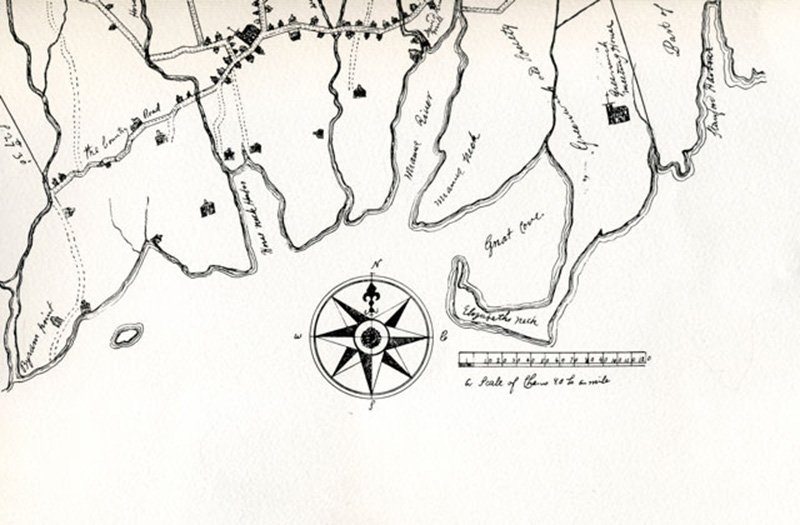A Short History of Greenwich
In 1640, settlers from Massachusetts purchased land between the Asamuck and Patomuck rivers in the area now known as Old Greenwich. Not long after, the English joined the Dutch in a dispute with the Native Americans, which resulted in a massacre at the Indian village of Petuquapaen. The newcomers then carved out larger and larger land holdings on which to raise potatoes, grain and fruit. Settlements grew along the shore from Stamford on the east to the Byram River on the west and north to the New York State border. By 1730, the nearly 50 square miles which comprise present-day Greenwich were laid out.

For its first 200 years, the acquisition and cultivation of farmland was Greenwich’s major enterprise, although grist mills signaled the beginnings of local industry and active shipping was conducted from the Mianus River. The relative calm of these years was broken by the Revolutionary War when Greenwich was a garrison town that experienced raids from both the British army and “cowboys.” The seven-year-long war was fought on the roads and farms of Greenwich, destroying homes, crops and human life.

The railroad came to Greenwich in 1848, marking a dramatic improvement in transportation and bringing many immigrants who made Greenwich their home. The Irish came to work on the railroad and settled close to Greenwich Avenue, the town center. In an adjacent neighborhood called Chickahominy, Italian stonemasons congregated to be near the Byram quarries. Other Italians moved further east to North Mianus where they worked in the Mianus Woolen Mill. The Germans went to Byram, then known as East Port Chester, and found work in the Abendroth Foundry. Glenville, on the Byram River, attracted Poles who worked at the felt mill and at Russell, Burdsall & Ward, manufacturers of nuts and bolts. Distinct neighborhoods developed, which have continued to be home to second- and third-generation descendants.

Greenwich also developed as a resort catering to New Yorkers wishing to escape city life for the summer. Along the shore, hotels were erected. Many visitors later decided to build homes here, creating such areas as Belle Haven, Field Point Park, Byram Shore and Rock Ridge. Families whose names we recognize today—Benedict, Bruce, Converse, Gimbel, Havemeyer, Mallory, Milbank, Rockefeller and Teagle—amassed large land holdings and built the estates for which Greenwich is famous. Some of these families became great benefactors to the community.


The 20th century burst upon Greenwich with yet another improvement in transportation. The trolley from Rye to Stamford connected Greenwich from west to east with convenient in-town service. After World War I, the automobile took precedence. In 1938, the Merritt Parkway cut through the northern section of Greenwich, followed by I-95 to the south in 1957. Once again new arrivals swelled the population of the town. This time the newcomers were the employees of corporations leaving New York City for congenial suburban headquarters.

While the beginning of the century saw the creation of great land estates, the post-World War II period witnessed their dissolution into smaller building lots to accommodate the new residents. Growth and development brought about the reorganization of town government, the consolidation of the school system and the establishment of a network of independent, nonprofit organizations, which supply the town with social services and cultural institutions.


The second half of the century saw a growing concern in Greenwich for protecting its heritage, resulting in the creation of local historic districts, six National Register districts and more than 280 individually listed structures recognized by the Greenwich Historical Society in its Landmarks Program. Both the town and private not-for-profit organizations have acquired undeveloped land as park and conservation areas.

